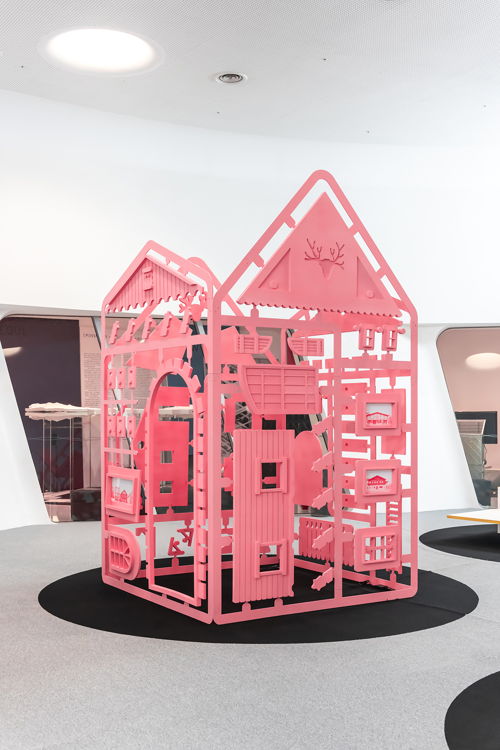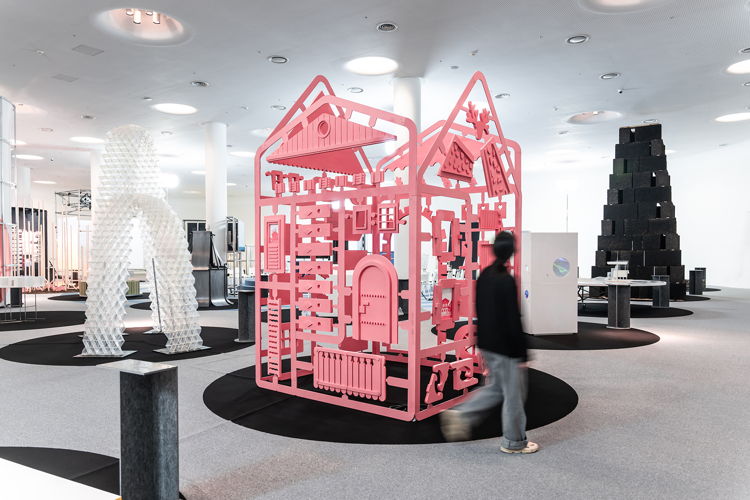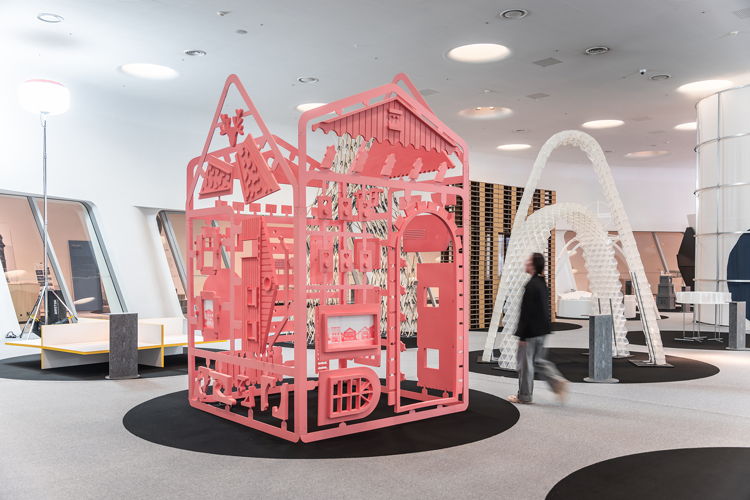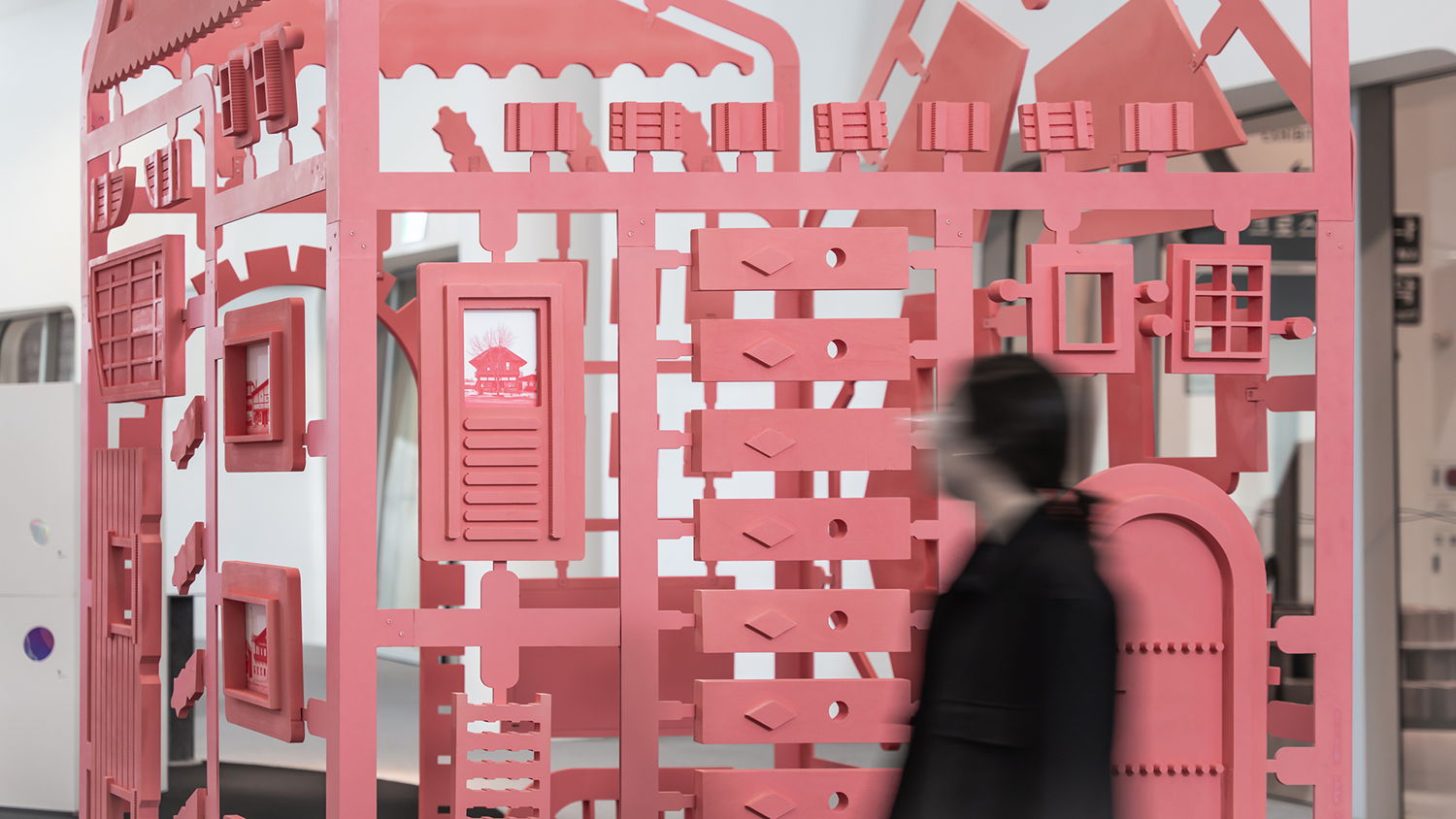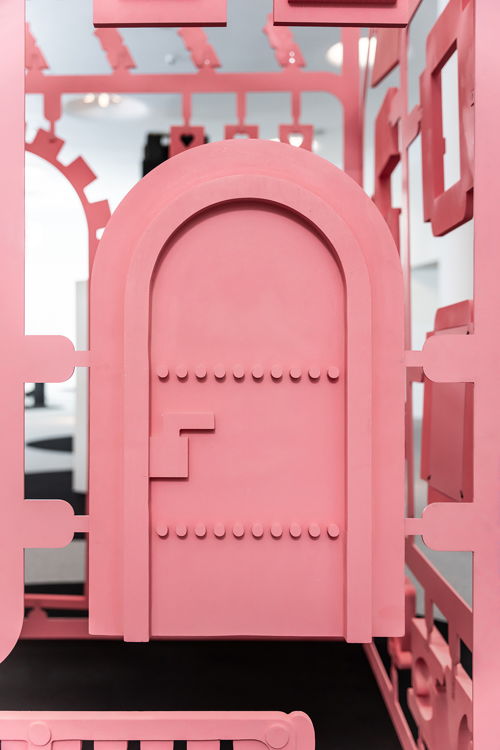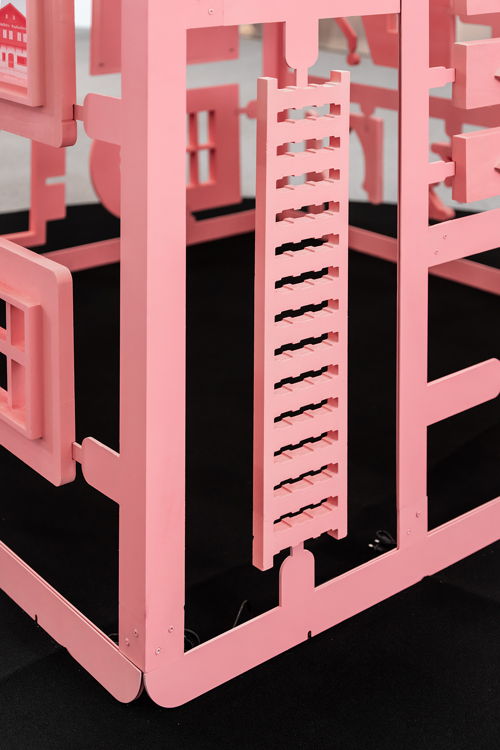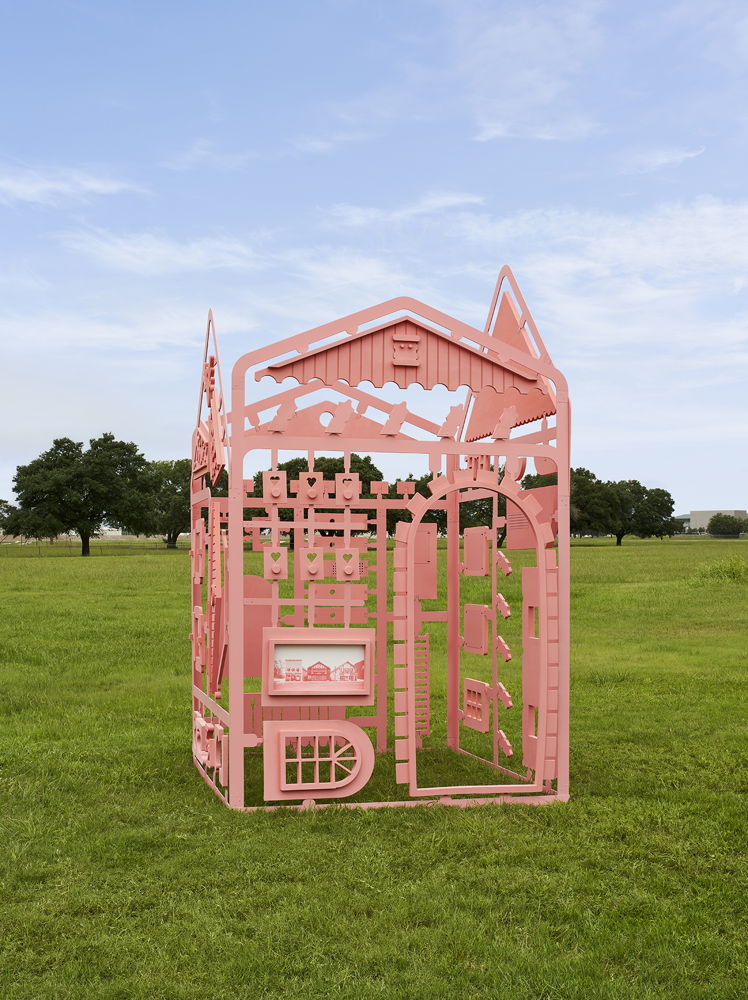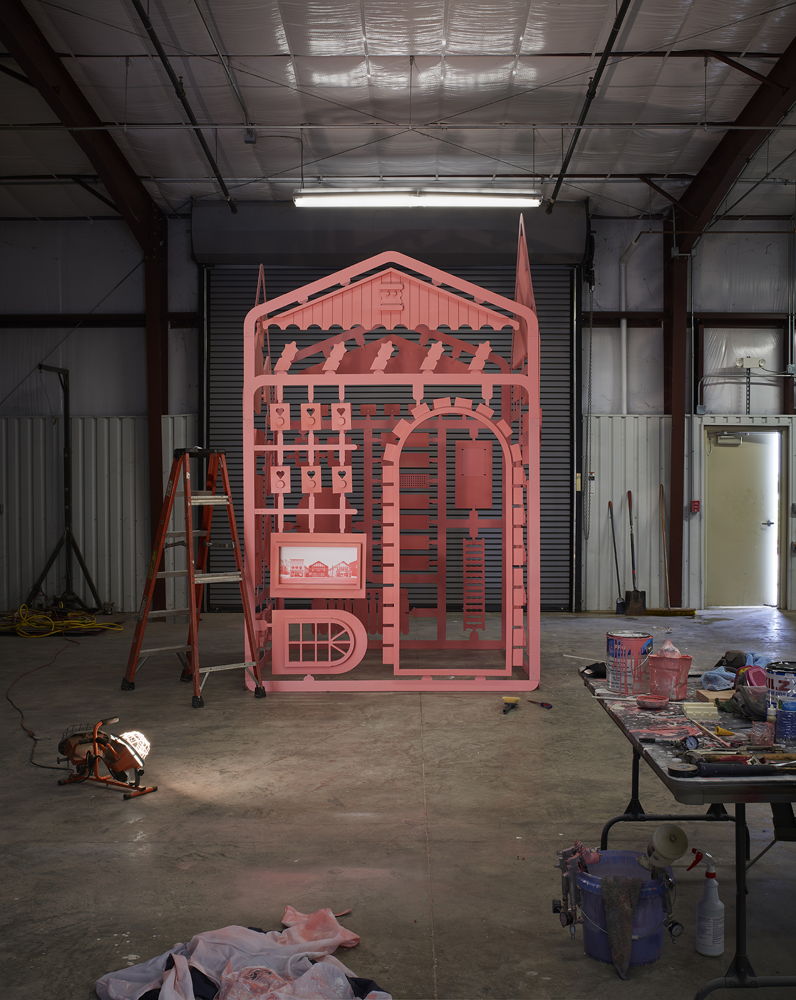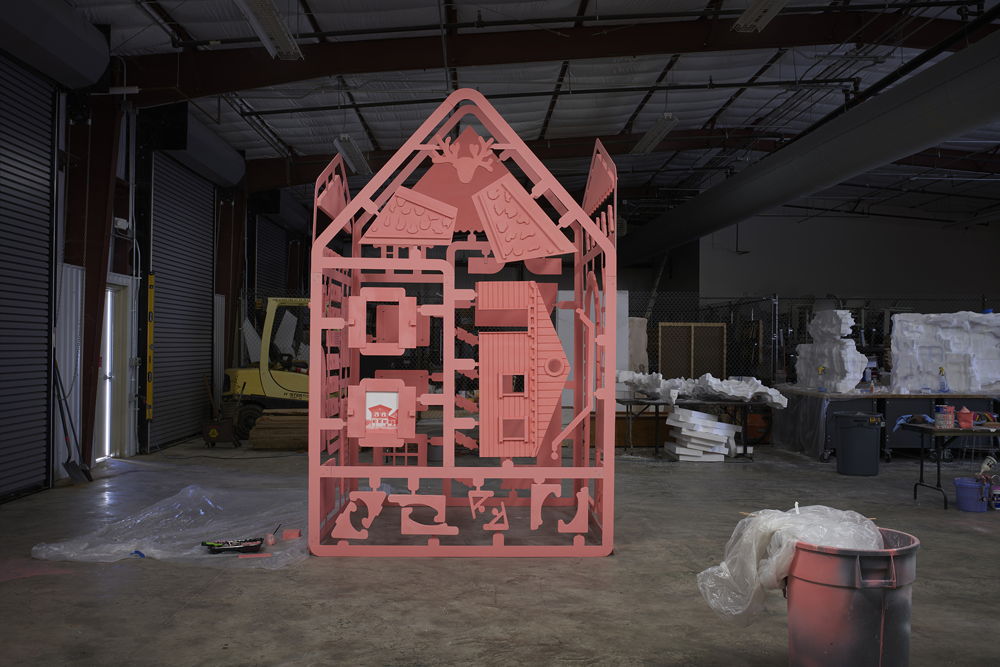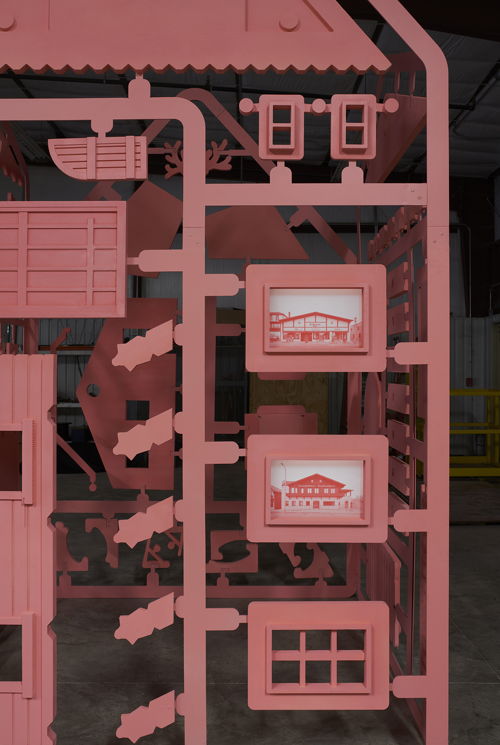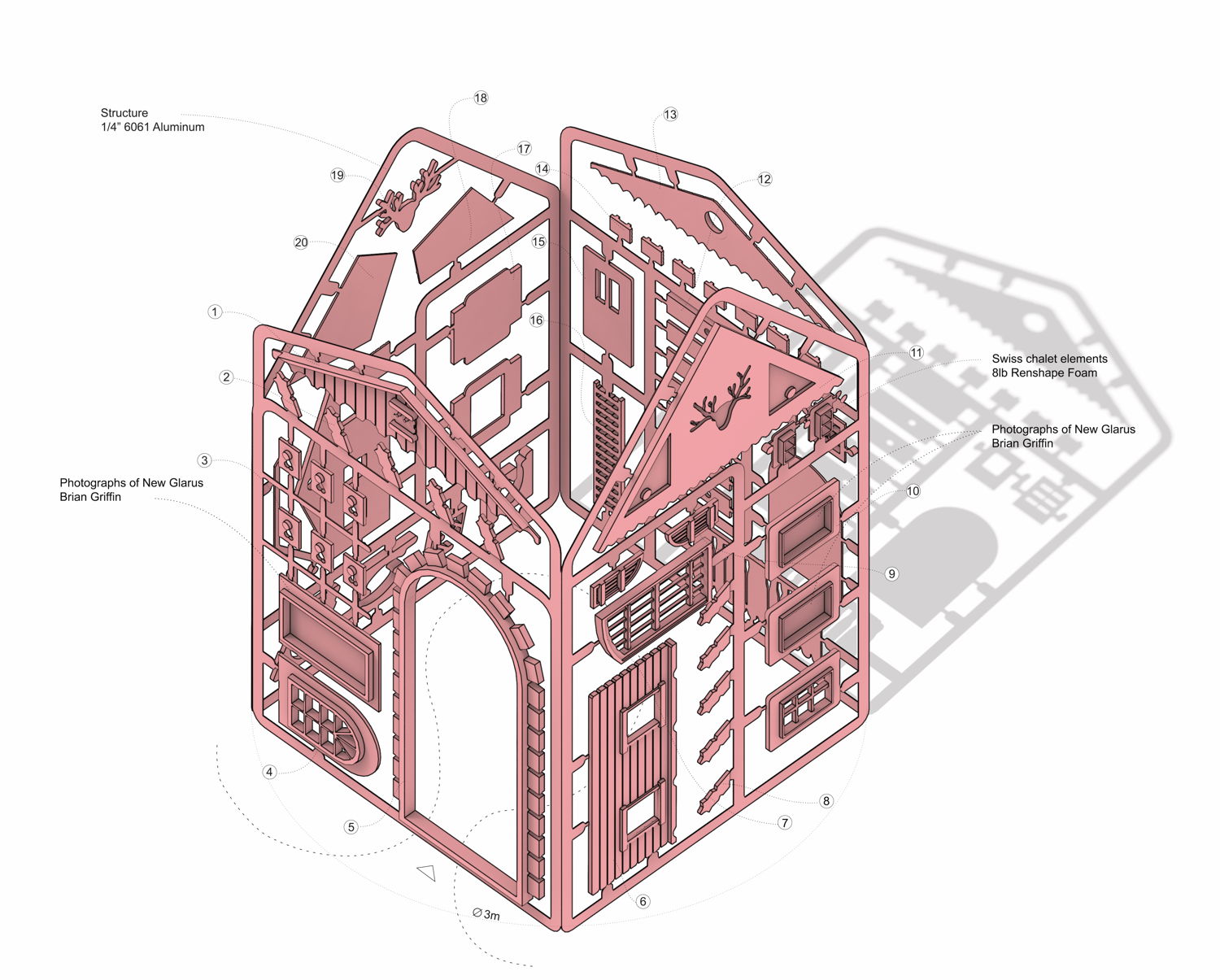'Fabricating Swissness' Debuts at the 2021 Seoul Biennale of Architecture and Urbanism
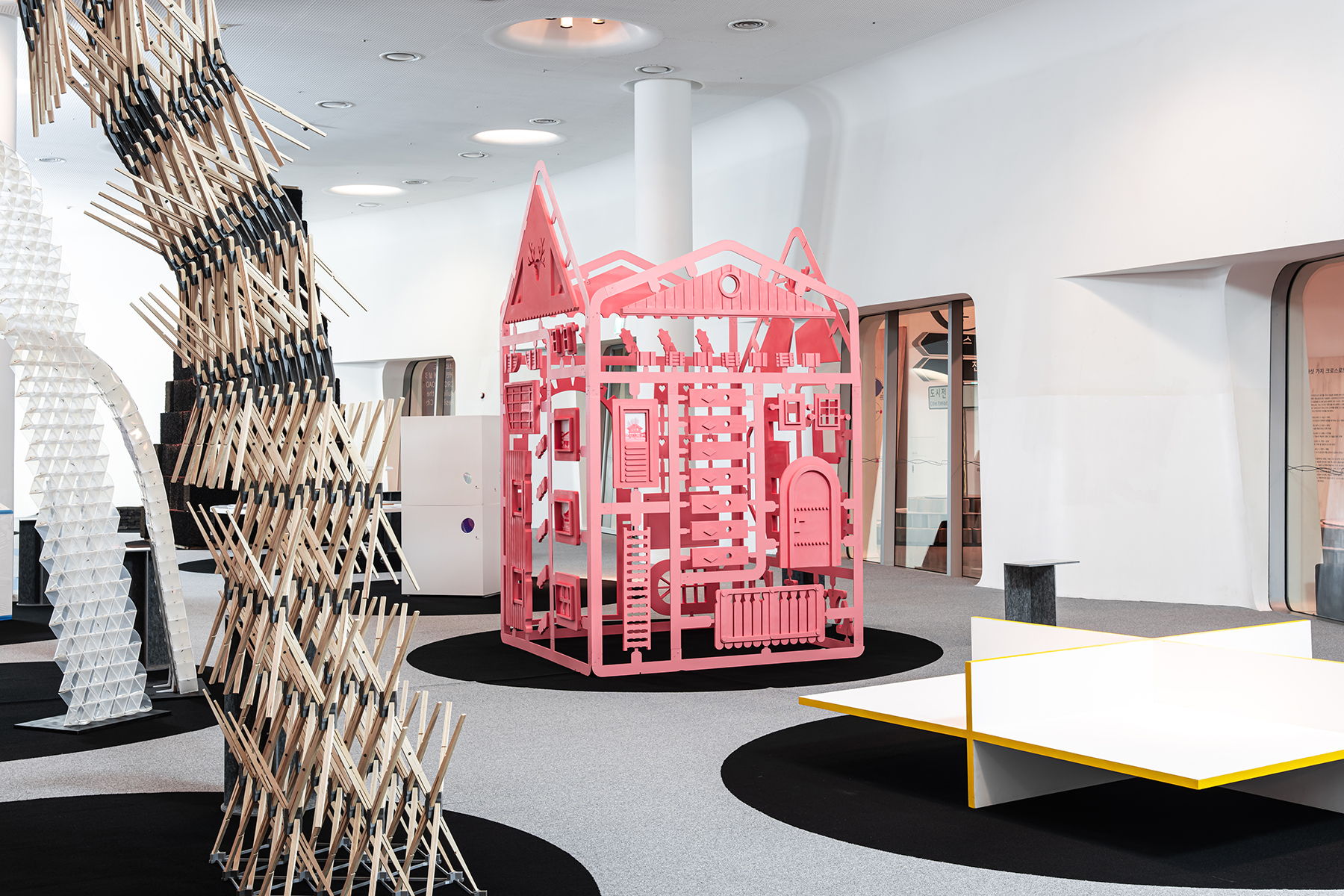
Seoul, Korea—Fabricating Swissness is a multimedia installation designed by Swiss-American design firm Architecture Office, led by Nicole McIntosh and Jonathan Louie. It will be exhibited at the 2021 Seoul Biennale of Architecture and Urbanism from September 16 through October 31, 2021 at the Dongdaemun Plaza in Seoul, Korea, as part of the Thematic Exhibition, which explores the potential synergies between architecture and infrastructure The project builds on the traveling exhibition Swissness Applied, presented in 2019 at the University of Wisconsin-Milwaukee, 2019 at Kunsthaus Glarus Güterschuppen, and 2020 at Yale Architecture Gallery; and on the forthcoming publication “Swissness Applied: Learning from New Glarus” (Park Books, Fall 2021).
Fabricating Swissness is a four-sided aluminium scaffold structure measuring 2m x 2m x 3.6m that illustrates the notion of “Swissness” and the Swiss chalet style in New Glarus, Wisconsin through vernacular imagery, audio, and memorabilia. In the early 1960s, New Glarus actively embraced the Swiss aesthetic as a way to enhance the social and economic base of its community. Today, New Glarus’ building code specifically contains Article II: Swiss Architectural Theme, which describes typical building elements that evoke certain associations with traditional Swiss architecture, such as the chalet.
Fabricating Swissness is a three-dimensional representation of the village’s efforts to appear Swiss. Painted coral, a contemporary interpretation of the iconic red color of the Swiss flag, the occupiable structure supports scaled-up model parts translated from Swiss-themed Gebr Faller Modellbau train kits. Surrounding these are six photographs of New Glarus by Brian Griffin and audio interviews exploring the aesthetics of Swissness with Benedikt Wechsler of the Consul General of Switzerland and architect Will Gallaher. The interviews are mixed with alpine sounds derived from traditional Swiss folk music and reconstructed through a variety of digital transformations by sound designer Paul Chavez of Arup. Together, the media, materials, and ephemera are semi-autonomous entities that together convey concepts commonly understood as Swiss.
Says McIntosh, “We are questioning if ‘Swiss’ architecture can be understood as just the formal character of specific alpine building elements as suggested in the design guidelines of New Glarus. Can material and size be disregarded? Can color be different? Seeing these ‘Swiss’ elements isolated from the actual architecture (i.e. shutters not on a facade) are they still understood as Swiss?”
The assembly of the installation draws inspiration from the overlapping and symmetrical joinery of Swiss Chalets. The structure is designed with a single joint that is made from screwing threaded barrels through two panels of 1/8” thick aluminum. Wiring paths are routed through two 1/8” thick panels that are sandwiched together and hide audio wires for speakers and mp3 players within the thin structure. Made of individual elements to minimize material waste, the components of the structural assembly were cut from 5 sheets of 4’x8’ aluminum. The installation is conscious of its travel footprint, and can fit flatpack into a 4’x8’x30” plywood crate. Upon arrival in Seoul, it will be assembled by a small team of 3-4 people using only flathead screwdrivers.
"While Americans have been trying to replicate alpine structures for a hundred years. Our interest was not to copy the chalet, but actualize its image through minimal means. The process of optimization undertaken with ARUP meant less labor and material waste in the build process,” says Louie.
Architecture Office will give an online lecture on October 3, 2021, as part of the CrossxTalks series at the Seoul Biennale of Architecture and Urban Design.
Fabricating Swissness is on view September 16, 2021 – October 31, 2021 at Dongdaemun Plaza in Seoul, Korea as part of the Thematic Exhibition at the 2021 Seoul Biennale of Architecture and Urbanism.
Installation Photography by Hansol Bae:
Fabrication Photography by Brian Griffin:
Drawings Courtesy Architecture Office:
Project Details:
Fabricating Swissness, 2021
Materials: Sherwin Williams ‘Dishy Coral’ Latex Paint, Waterjet Cut - 1/4” and ⅛ 6061 Aluminum, CNC Milled - 8lb Renshape Foam, Harmon Kardon Esquire Mini 2 Ultra Slim and Portable Premium Bluetooth Speakers, and IPOD Mini MP3 Players.
Project Credits:
Design: Nicole McIntosh and Jonathan Louie with Andrew G. Atwood, Julia Valisyev, Oscar Garza Reza, Ryan Garza, and Nari Kim.
Fabrication: Michael Gayk and David Goltz of the Automated Fabrication Lab at Texas A&M with Shane Bugni, William DiNisco, and Logan Froebel.
Structural Engineering: Roel van de Straat (ARUP)
Sound Design: Paul Chavez (ARUP)
Exhibition Photography: Selections from 'New Glarus' (2020), Brain Griffin
Audio Speakers: Wil Gallaher, architect ; Benedikt Wechsler, Consul General of Switzerland
Installation Photography: Brian Griffin and Hansol Bae
This project was generously supported by Texas A&M University, ARUP, Seoul Metropolitan Government, and the Seoul Biennale for Architecture and Urbanism.
About ARUP
Arup is an independent firm of designers, planners, engineers, architects, consultants and technical specialists, working across every aspect of today’s built environment. Together we help our clients solve their most complex challenges – turning exciting ideas into tangible reality as we strive to find a better way and shape a better world.
About The Seoul Biennale of Architecture and Urbanism
The Seoul Biennale of Architecture and Urbanism (SBAU) is a venue for harmony that interacts with cities around the world, about artists and their work, and about issues and suggestions that explore the future of the cities we live in. The Seoul Biennale will consist of a pilot year for international cooperation, research, and progress, and an event year to present the results in the form of exhibitions and participation programs every other year. The exhibitions include Thematic and Cities Exhibitions, which shows the most innovative initiatives occurring in cities around the world, as well as Global Studios, Live Projects, workshops and other programs that engage public participation.


